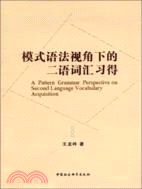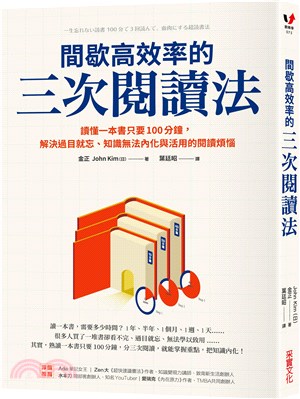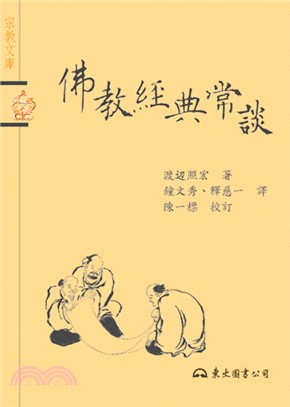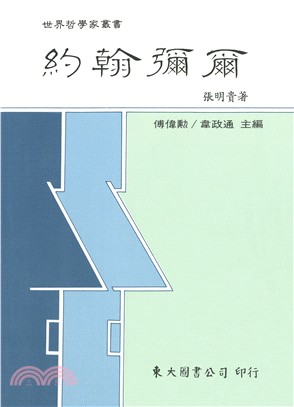商品簡介
目次
List of Figures
List ofAbbreviations
List of Pattern Notations
Chapter 1 Introduction
1.1 Research orientation
1.2 Pattern: the object ofresearch
1.3 Rationale
1.4 Key research questions
1.5 0rganization ofthe book
Chapter 2 Pattern Grammar
2.1Identification, definition, and presentation of“pattern”
2.2 A historical review ofpattem grammar
2.2.1 Earlier work on patterns and usage
2.2.2 Research on word combinations
2.2.4 Patterngrammar
2.3 Two approaches to pattern grammar
2.3.1 Approach 1: A word and its patterns
2.3.2 Approach 2: A pattern and its words
2.4 Pattem-meaning association (PMA): core ofpattern grammar
Chapter 3 Pattern Grammar and L2 Vocabulary Development
3.1 Pattern and depth ofword knowledge
3.1.2 Associating pattern with depth ofword knowledge
3.2 Depth ofword knowledge and L2 vocabulary development
3.2.1 Aunified account ofdimensions ofL2 vocabulary development research
3.2.2 Previous research on depth ofL2 vocabulary development
3.3 Summary
Chapter 4 0n the Corpus Method
4.1 Justifications for using leamer corpora in SLA study
4.2 Advantages ofusing learner corpora in the present research
4.2.1Learner corpora provide large quantities ofnatural language use data
4.2.2 Learner corpora provide a new text type for observation
4.3 Nature ofcorpus linguistics
4.3.1 Corpus linguistics is “a new way ofthinking about language”
4.3.2 Corpora serve both as a test bed and as a source for hypotheses in SLA study
4.4 Limitations ofusing learner corpora in SLA study
Chapter 5 Methodolog
5.1.1 Preparing the learner corpus
5.1.2 Guaranteeing the comparability between different samples ofthe leamer corpus
5.1.3 Preparing the control corpus
5.1.4 Guaranteeing the comparability between the control corpus and the learner corpus
……
Chapter 6 results and Discussion
Chapter 7 General Discussion
Chapter 8 Conclusion
書摘/試閱
Leamers choice of non-focal words also mirrored their lack of collocational knowledge of the focal words. As is shown in the above examples, learners preferred to use “concrete” nouns with GIVE and “entity” nouns with COME. This might be accounted for by the transfer of core meaning in Ll to the two verbs as well as by the influence of Ll conceptual knowledge. The core meanings in Ll of “transferring” and “moving towards” are transferred respectively to GIVE and COME. When generating English collocations for the two verbs, due to a lack of knowledge of English collocations, learners might rely on their Ll conceptual knowledge (Wolter, 2006). The process might be described as follows. Drawing on their conceptual knowledge of “transferring” and “moving towards”, learners might activate the nouns in their Ll that could be transferred and that could be reached. In Chinese, a typical collocation of “gei”(給), the equivalent of GIVE, would be something concrete; the word for control——“kongzht”(控制),for example, would not normally collocate with “gei”(給) Collocations of“laidao”(來到), the Chinese counterpart of COME, would usually be something solid; the word for solution ——“jiejue”(解決), for example, would unlikely collocate with “laidao”(來到). Translating the Chinese collocations into English, learners produced the groups of“concrete”nouns and“entity” nouns.
……
主題書展
更多主題書展
更多書展本週66折
您曾經瀏覽過的商品
購物須知
大陸出版品因裝訂品質及貨運條件與台灣出版品落差甚大,除封面破損、內頁脫落等較嚴重的狀態,其餘商品將正常出貨。
特別提醒:部分書籍附贈之內容(如音頻mp3或影片dvd等)已無實體光碟提供,需以QR CODE 連結至當地網站註冊“並通過驗證程序”,方可下載使用。
無現貨庫存之簡體書,將向海外調貨:
海外有庫存之書籍,等候約45個工作天;
海外無庫存之書籍,平均作業時間約60個工作天,然不保證確定可調到貨,尚請見諒。
為了保護您的權益,「三民網路書店」提供會員七日商品鑑賞期(收到商品為起始日)。
若要辦理退貨,請在商品鑑賞期內寄回,且商品必須是全新狀態與完整包裝(商品、附件、發票、隨貨贈品等)否則恕不接受退貨。

























